Disk Mode
Disk Mode Page
13-1
Chapter 13
Disk Mode
Disk mode lets you load and save files of objects between the K2500 and the outside world,
through the K2500’s floppy drive or SCSI ports. The floppy drive accepts MS-DOS format
double-sided double-density (DSDD—720K) and high-density (HD—1.4 M) floppy disks. It
will also accept single-sided double-density disks (SSDD—360K) if they’re formatted as
double-sided. To save data from the K2500 to a floppy disk, the disk must be formatted
(initialized) by the K2500 or by an IBM®-compatible computer running MS-DOS® software.
Most SCSI (Small Computer System Interface) devices will operate with the K2500. The K2500’s
SCSI ports require 25-pin SCSI connectors, and will work with hard drives up to 2 gigabytes in
size. The most common use for the SCSI ports is to connect a hard disk or chain of hard disks
for storing samples and other objects. You can also connect a CD-ROM drive for reading files to
the K2500. The K2500 will treat a CD-ROM drive like any other SCSI device (except that you
can’t save files to it).
Disk Mode in the K2500 allows flexibility to organize disk files and their contents. Many
powerful operations are included that can save a lot of time by allowing you to easily specify
exactly what you want to load or save. Examples of this range from organizing related files
into directories, to loading macro lists of files or selected objects from multiple SCSI drives, to
setting up programs to automatically link with samples off of a CD-ROM.
Lastly, the K2500 offers MS-DOS file system compatibility, sample transfer using the standard
audio file formats "AIFF" and "WAVE", and saving of song files as MIDI Type 0 format.
Furthermore, the K2500 can read song files in MIDI Type 1 format.
Disk Mode Page
To enter Disk mode, press the Disk button, and the Disk mode page will appear:
DiskMode||||Samples:65535K||Memory:747K|
Path|=|\DRUMS\||||||||||||||||||||||||||
(Macro|on)||||||||||||||||||||||||||||||
CurrentDisk:
SCSI|4||||||||Startup:Off|||
||||||||||||||||||||||||||Library:Off|||
Direct|Access,|121MB||||||||||||||||||||
TAXMOR|XL3-1001||||1.07|||||||||||||||||
<more||
|Load||
|Save||
Macro||
Delete|
more>
As usual, the current mode is displayed on the top line. At the middle of this line, the amount
of available sample RAM is shown (if you have added optional sample RAM; if you haven’t,
this part of the top line will be blank). To the right of the top line you see the amount of memory
available for storing all other RAM objects. Straight from the box, this number should be
around 240K. If you have added the optional P/RAM extension kit, the number will be about
1260K. The P/RAM kit enables you to store hundreds of additional programs, songs, and any
other objects. If you do a lot of programming or sequencing, the P/RAM option is a good idea.
In the center of the page is a line indicating the currently selected device. Select different
devices using any data entry method. You can select the floppy drive, or SCSI IDs 0–7. (If you
connect an Apple Macintosh® personal computer, don’t select SCSI ID 7, since that’s the SCSI
ID of the Mac, which can’t be changed. All SCSI devices connected in a network must have
different SCSI IDs in order for the network to function). When you want to communicate with
any of the SCSI storage devices in your network, set the Current disk parameter to the value
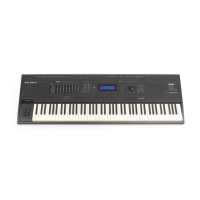
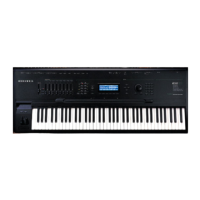
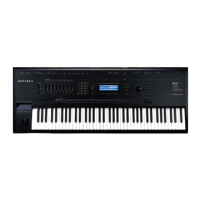
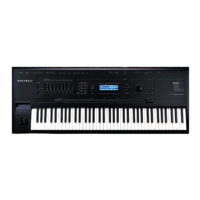
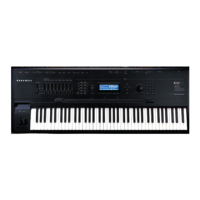

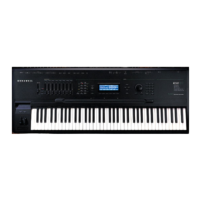
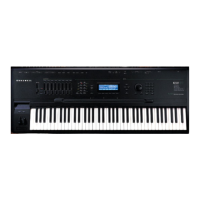
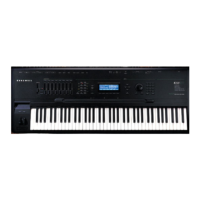
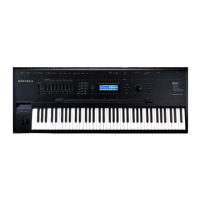
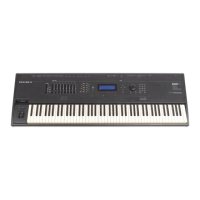
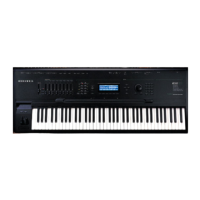
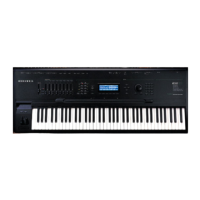
